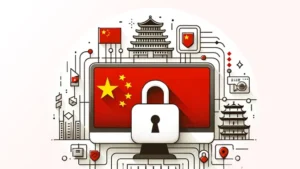Challenges In Data Protection: Data protection is a formidable task in today’s digital landscape, demanding meticulous classification of data by risk and the implementation of robust security technologies and strategies. In the realm of tech diffusion, where innovations constantly reshape our digital landscape, addressing the challenges in global data privacy becomes imperative.
1. The Exponential Growth of Data
The digital era has ushered in an unprecedented surge in data creation, with over 1.7 megabytes of new data generated every second. This exponential growth poses a significant challenge for organizations tasked with securing both customer personal information and sensitive data. The Breach Level Index reveals a staggering 9,198,580,293 data records lost or stolen since 2013, emphasizing the overwhelming volume and veracity of data in our technology-driven world.
To tackle this challenge, organizations must embrace scalable data protection solutions capable of adapting to the ever-growing data landscape. Implementing advanced data classification algorithms and encryption methods becomes crucial to ensure that both structured and unstructured data are shielded from potential threats. Additionally, investing in artificial intelligence (AI) and machine learning (ML) technologies can enhance predictive analytics, enabling organizations to identify potential vulnerabilities and breaches before they occur.
Furthermore, fostering a data-centric culture within the organization is essential. This involves educating employees about the importance of data privacy and instilling responsible data-handling practices. By integrating data protection into the organizational culture, companies can create a collective awareness that acts as a first line of defense against the challenges posed by the exponential growth of data.
2. The Cost of Maintaining Data Privacy
A data breach is not just a technological setback; it’s a financial blow that can cost organizations millions of dollars in lost revenue. The Ponemon Institute reports an average breach cost of $3.62 million in 2017, with a 30% likelihood of organizations experiencing a data breach in the next two years. Regulatory penalties add another layer of risk, particularly for companies dealing with European Union customer data, which could face penalties of up to 4% of Adjusted Gross Revenue or €20 Million.
To mitigate the financial implications of a data breach, organizations need to adopt a comprehensive approach to data privacy that includes proactive risk management and incident response strategies. Implementing encryption technologies and anonymization methods can minimize the impact of a potential breach. Additionally, investing in cyber insurance can provide a safety net, covering financial losses and regulatory fines in the event of a security incident.
Moreover, compliance with data protection regulations such as GDPR and CCPA is non-negotiable. Organizations must stay abreast of evolving regulations and continuously update their data protection policies to ensure alignment with legal requirements. By integrating robust risk mitigation strategies, leveraging technological solutions, and staying compliant, organizations can navigate the financial challenges associated with maintaining data privacy.
3. The Proliferation of Open Vulnerabilities
In 2017, nearly 15,000 disclosed vulnerabilities surfaced, marking a 56% increase from the previous year. This surge in vulnerabilities directly correlates with a record-breaking number of public data breaches, exceeding 1,254 in the first half of 2017 alone. For IT security administrators, managing thousands of patches released annually becomes an overwhelming challenge, emphasizing the need for a robust patch management process and adherence to best practices.
Addressing the proliferation of open vulnerabilities requires a proactive and strategic approach to cybersecurity. Organizations should prioritize vulnerability assessments and penetration testing to identify and remediate potential weaknesses in their systems. Implementing a robust patch management process involves continuous monitoring of security updates and prompt deployment to eliminate vulnerabilities.
Furthermore, organizations should consider investing in threat intelligence platforms that provide real-time insights into emerging threats and vulnerabilities. This proactive stance enables organizations to anticipate potential risks and fortify their defenses before malicious actors can exploit vulnerabilities. By adopting a comprehensive cybersecurity strategy that includes regular assessments, strategic patch management, and threat intelligence integration, organizations can effectively navigate the challenges presented by the proliferation of open vulnerabilities.
4. The Advanced Technology Landscape – IoT and Mobile
The advent of the Internet of Things (IoT) presents a significant area of concern for security professionals. A study reveals that 90% of information security professionals are more worried about IoT than network security. The lack of proactive security vulnerability patches for connected IoT devices, coupled with the exponential growth in device sales, raises alarm bells. Security professionals must reassess Bring Your Own Device (BYOD) policies, formulate IoT readiness plans, and employ advanced security analytics to monitor networks for potential threats.
To address the challenges posed by the advanced technology landscape, organizations must embrace a holistic approach to cybersecurity that encompasses both IoT and mobile devices. Implementing stringent BYOD policies, including robust authentication mechanisms and device management solutions, is essential to mitigate potential risks associated with mobile devices. Additionally, organizations should conduct thorough risk assessments before integrating IoT devices into their networks, considering the security implications of each device.
Investing in advanced security analytics tools, such as Intrusion Detection Systems (IDS), Intrusion Prevention Systems (IPS), and Security Information and Event Management (SIEM) solutions, becomes paramount in monitoring and detecting malicious activities across networks, applications, and data. Continuous monitoring and threat detection ensure a proactive defense against potential threats emerging from the complex IoT and mobile landscape.
Moreover, organizations should advocate for industry-wide collaboration to establish security standards for IoT devices. Encouraging manufacturers to prioritize security in the design and development of IoT devices will contribute to a more secure technology landscape. By adopting a comprehensive cybersecurity strategy that addresses the unique challenges posed by IoT and mobile technologies, organizations can navigate the intricacies of the advanced technology landscape and safeguard their digital assets.
5. Human Error Creates Complexity
Despite technological advancements, human error remains a pervasive challenge in data privacy and security. Ill-informed and unaware employees pose a significant risk through weak passwords, accidental data deletions, falling for phishing scams, privileged account access, and inappropriate web browsing. Mitigating this risk requires a comprehensive security awareness and training program, empowering employees and reducing the likelihood of data leaks.
Addressing the human factor in data protection involves cultivating a cybersecurity-aware culture within the organization. Providing regular and engaging security training sessions can enhance employees’ awareness of potential threats and educate





